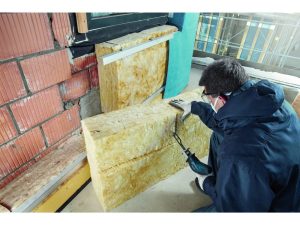LATEST CUSTOM AND SELF BUILD DATA SHOWS REDUCTION IN PLANNING PERMISSION GRANTED
Build It Education House joists
Government has published the latest data for custom and self build in England based on council returns for 2021-2022, which shows a decline in permissions granted. This is in spite of 63,662 individuals having now signed their local self build register, as well as 807 groups.

The number of permissions granted for plots for custom and self build fell by 23% in the year to 30 October 2022, with a total of 6,374 granted.
The numbers of individuals and groups joining the register in the same period was also the lowest level to date, with a 34% fall in individuals and a 37% fall in the number of groups joining the registers.
Despite this, the overall numbers on the registers increased, by 8% for individuals and 6% for groups compared to the previous year. Equally, the number of councils with adopted percentage policies has grown by just five on the previous year, at 39 councils, with 49 councils having draft policy. One reason why more supportive policy is not emerging is that many councils have halted their local plan process in light of proposed government changes to planning.

While the data reflects the lowest growth to date, there are numerous register-specific and wider issues exerting a dampening effect on activity. In regard to registers more councils than ever have limiting factors in place, such as local connection tests or charges to join and stay on the register, which NaCSBA tracks.
Hot NaCSBA knows that the registers only capture a fraction of wider demand that is out there, and consequently it urges anyone interested in the route to sign their local authority registers. This demand is vital to capture, as it facilitates sites and policy.
The public can find and sign their local self build register via the Self Build Portal, or complain using our template letter if they feel that unfair tests prejudice them from signing up.
Find your local self build register
In terms of the wider sector, housing and planning applications have slumped in the light of the cost of living crisis and wider economic factors. The Guardian recently reported that planning applications in England have fallen to their lowest figures in 16 years, as reported by the Department of Levelling-Up, Communities and Housing.
The Home Builders Federation (HBF) also recently warned that housebuilding will fall to its lowest levels since the Second World War unless there is serious change to the planning system to facilitate development, compounding the housing crisis.
Peter Johns, CEO of NaCSBA said, “The latest data is disappointing and reflects the obstacles put in place to registering by many local authorities (be it registration fees, local connection or financial tests). NaCSBA continues to challenge authorities where they are putting road blocks in the way, but also supporting authorities through the work of its Right to Build Task Force. We know that the numbers underestimate the level of demand by some margin – NaCSBA is currently undertaking research and analysis to demonstrate this and expects to report on it later in 2023.”
Andrew Baddeley-Chappell, Policy Director, NaCSBA said, “The drop in numbers joining the registers is a disappointment and we are in the process of undertaking a deep dive into the data. We do not believe the fall off is as a result of any reduction in the underlying desire of people to have a home built to their design and specification.
“We continue to see challenges from a proportion of planning authorities, that are contrary to the spirit and letter of the legislation – legislation that is being tightened to address some of the poor practice that have been identified. Factors such as covid, inflation and cost of living challenges may also have had an impact.
“We continue to strongly believe that low public support for new homes is closely linked to the lack of desire for the homes that are currently being delivered and that greater customer choice is the key to more and better homes.”












